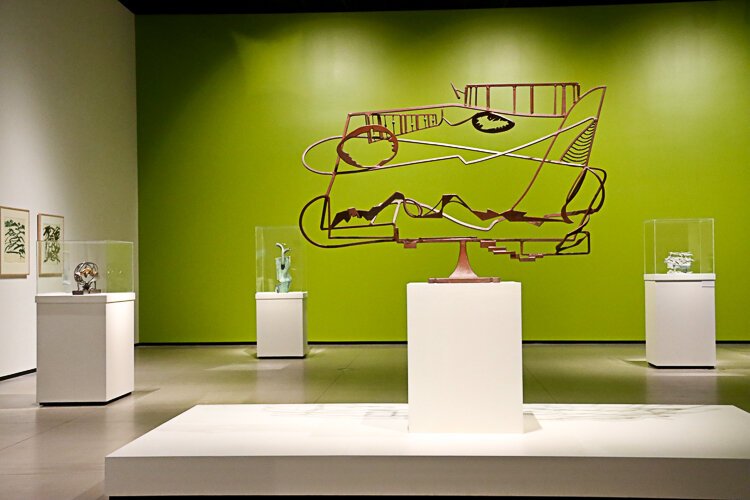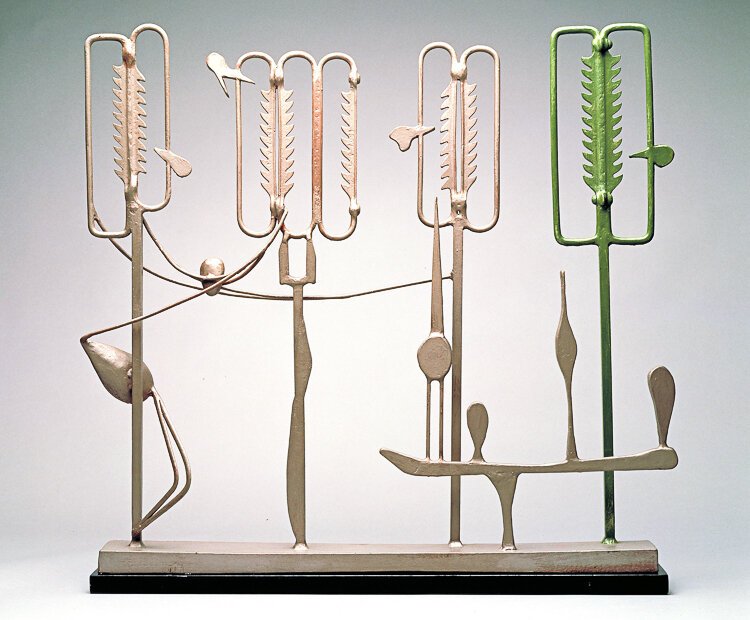David Smith: Sculpting space, nature, and legacy at Meijer Gardens
David Smith’s relationship with nature is central to his sculptures. Frederik Meijer Gardens and Sculpture Park's interior and exterior exhibition of his work, "David Smith: The Nature of Sculpture," resonates deeply with his intent.
David Smith was more than a sculptor; he was a revolutionary thinker who envisioned the possibilities of space, form, and material in ways few others could. His groundbreaking works, often described as “drawing in space,” utilized welded steel and industrial techniques he learned over time to create dynamic forms that engage with their environment.
At Frederik Meijer Gardens & Sculpture Park in Grand Rapids, the exhibition “David Smith: The Nature of Sculpture” provides a unique opportunity to explore the breadth of his career and the enduring impact of his vision, especially as it relates to the natural world.
Suzanne Ramljak, vice president of collections and curatorial affairs at Meijer Gardens, shared insights into Smith’s artistry during his brief career, as the artist died unexpectedly in 1965 at the age of 59.
“Smith’s ability to draw out the metal as a narrow line allowed him to articulate form while simultaneously framing and enveloping the background,” Ramljak explained as we toured this vast exhibition that extended from the gallery onto the rooftop garden. “It is as if he drew a line around the space, making it an integral part of the composition.”

Suzanne Ramljak, vice president of collections and curatorial affairs at Meijer Gardens.
This interaction between sculpture and its surroundings is a defining characteristic of Smith’s work, particularly his mastery of open-form sculpture, which invites the natural world into the art itself.
“Smith wasn’t the only artist exploring open form, but he was certainly the most expansive and extravagant,” says Ramljak.

The context of nature and place
Smith’s relationship with nature is central to his art, and Meijer Gardens’ interior and exterior exhibition of his work resonates deeply with his intent.
“Siting was crucial to his practice,” Ramljak noted. “From the beginning, he would photograph his sculptures against the sky, ensuring they existed in dialogue with their environment, even if only for a moment.”
This integration of art and nature strengthens the exhibition’s theme, making Meijer Gardens a fitting venue.
The exhibition also highlights connections to another renowned artist, Alexander Calder, whose works are well-known to residents of Grand Rapids. Calder’s famous piece, La Grande Vitesse, interacts with its surroundings in a manner that builds off Smith’s emergent techniques. While Calder’s sculptures use bold, vibrant colors, Smith’s often merge subtly into their landscapes, inviting viewers to spend time with the work to uncover its nuances.
“Smith’s sculptures are not static; they invite viewers to explore them from multiple angles and perspectives,” Ramljak added. “The more time you spend, the more forms and layers you
discover. There are multiple sculptures to be found within each piece.”
Artistry through industrial innovation
Smith’s use of industrial techniques and materials, such as stainless steel and painted metals, was groundbreaking.
“Steel was the material that built this country,” says Ramljak. Smith took it from industry and architecture and gave it new life in art.”
His innovation extended to using reflective surfaces and durable materials suited for outdoor settings, transforming them into vehicles for creative expression.
“He used car enamel, spray paint, and even industrial-grade metals to create works that were both durable and visually stunning,” Ramljak explained. “He showed that these materials could transcend their utilitarian origins to become powerful artistic agents.”

A legacy that inspires
Smith’s impact on sculpture is profound. His contributions include the development of open-form techniques, the use of painted metals, and the concept of sculpture as an integral part of the environment.
As Ramljak observed, “He staged some 80 sculptures on his property at Bolton Landing, New York, and many consider that outdoor installation to be his greatest work — a precursor to today’s sculpture parks.”
Visitors to the Meijer Gardens exhibit will encounter a comprehensive view of Smith’s career, from his earliest works inspired by found objects in the Virgin Islands to his final series. Ramljak emphasized the importance of seeing these works in person.
“Photographs don’t capture the scale, texture, and presence of Smith’s sculptures. You need to walk around them, follow the lines, and let time reveal their dynamism.”
An invitation to West Michigan
“David Smith: The Nature of Sculpture” exhibition offers a rare chance to experience the legacy of a transformative artist. “This exhibition covers his entire career,” Ramljak stated. “It’s a gift — not just to the art world but to anyone who wants to see how art can merge with nature and elevate both.”
Smith’s work reminds us that sculpture is not merely an object but a conversation — between material and maker, art and environment, and artist and audience. At Meijer Gardens, this conversation continues, inviting all to pause, explore, and connect with an artist whose legacy to the arts is finally getting the attention it deserves in this exhibition.
The exhibition “David Smith: The Nature of Sculpture” runs until March 2 at Frederik Meijer Gardens & Sculpture Park. In the new year, don’t miss the chance to delve deeper into this remarkable exhibition. Join Jennifer Field, executive director of The Estate of David Smith, for the compelling program “David Smith: Sculpture as Complex as Life” on Jan. 12.
Photos of Suzanne Ramljak and of Smith’s work provided by Frederik Meijer Gardens & Sculpture Park. Additional imagery provided by Tommy Allen.










